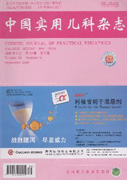Abstract: Objective To analyze the experience of misdiagnosis of anomalous origin of left coronary artery from pulmonary artery (ALCAPA) with cardiomegaly in infants and children. Methods A total of twenty-two infants and children with ALCAPA and secondum cardiomegaly who had once been misdiagnosed from 1996 to 2009 were analyzed retrospectively. The examination included electrocardiography, chest X-ray, echocardiography, computed tomography and angiographies.Totally 21 patients underwent cardiac operation. Results In cases of infants, 6 were misdiagnosed with endocardial fibroelastosis, 3 with dilated cardiomyopathy, and one with congenital mitral valve prolapse. In cases of children, 4 were misdiagnosed with dilated cardiomyopathy, 3 with endocardial fibroelastosis, 2 with congenital mitral valve prolapse, 1 with right coronary artery fistula, 1 with Kawasaki disease and 1 with patent ductus arteriosus. The diagnoses of ALCAPA were confirmed by cardiac surgery in 21 cases. Conclusion The cases with ALCAPA and secondum cardiomegaly are easily misdiagnosed with endocardial fibroelastosis, dilated cardiomyopathy, congenital mitral valve prolapse and coronary artery fistula. It is important to carefully identify the origin of left coronary in echocardiography and computed tomography, and this can differentiate ALCAPA from other diseases.

